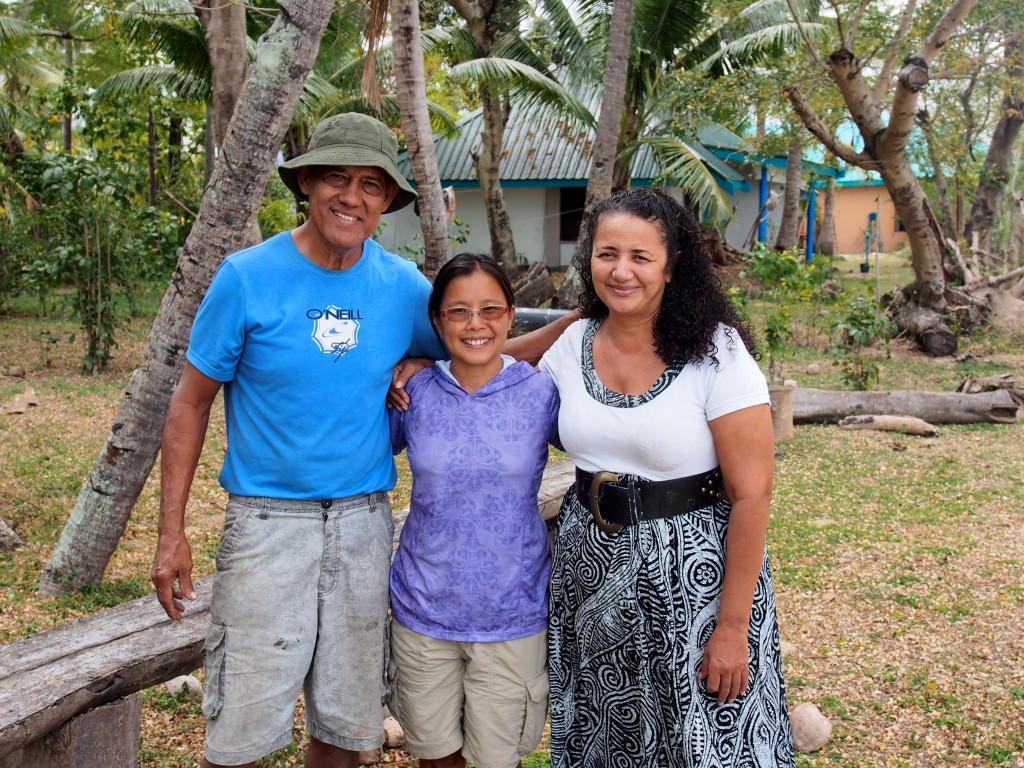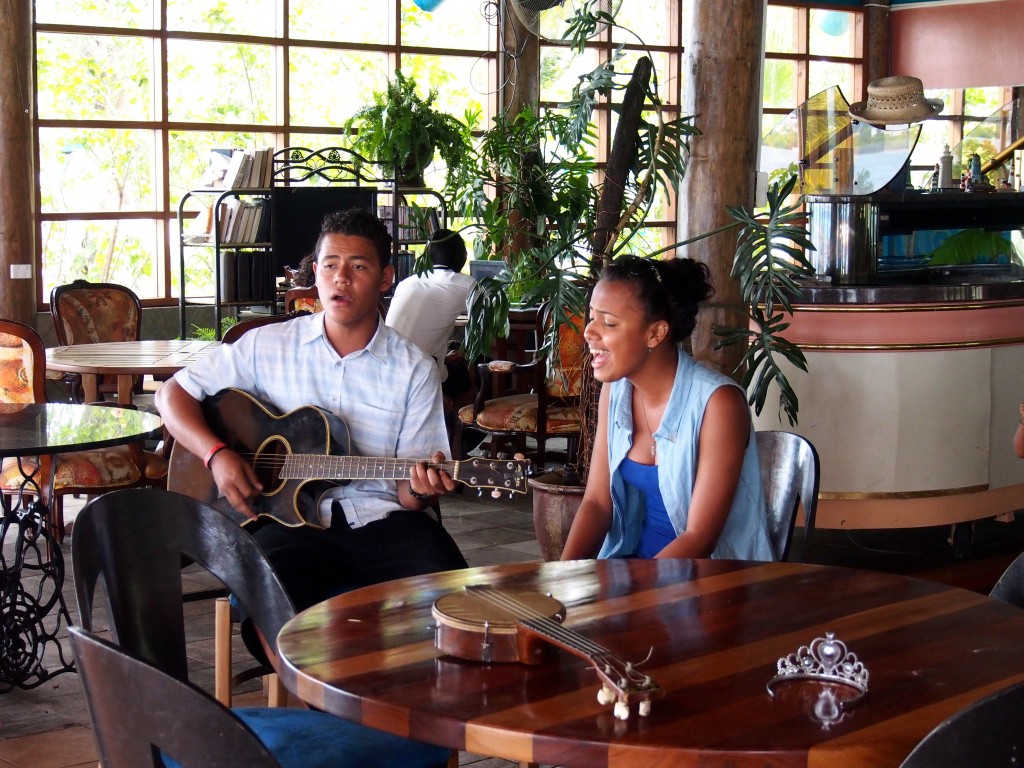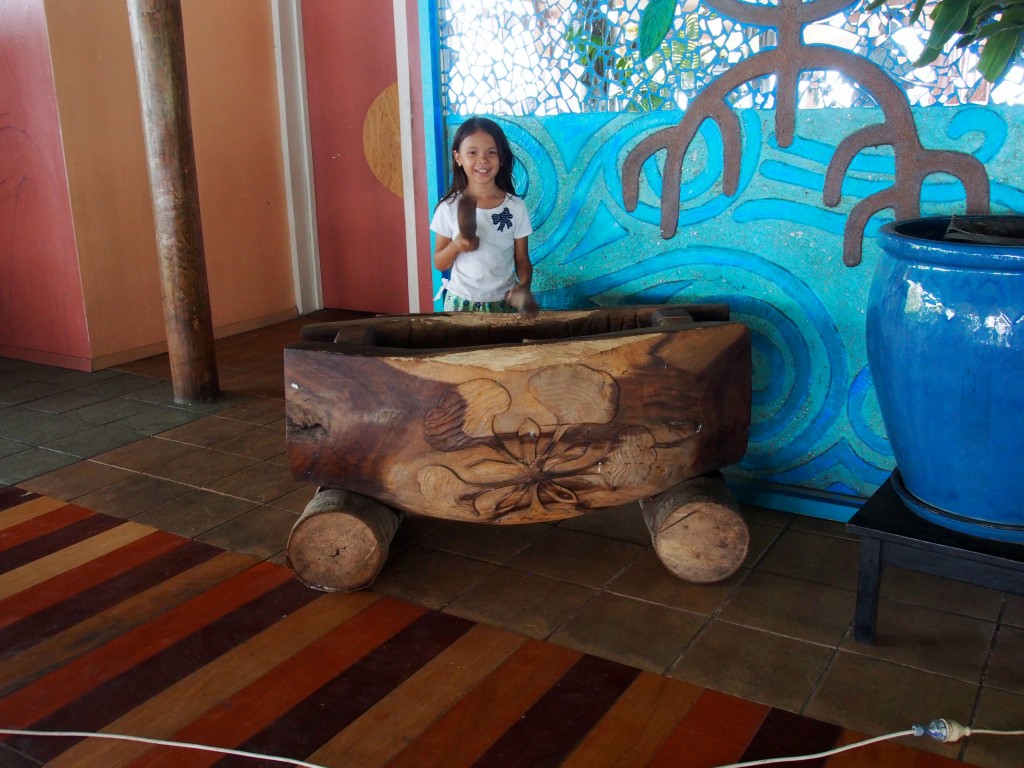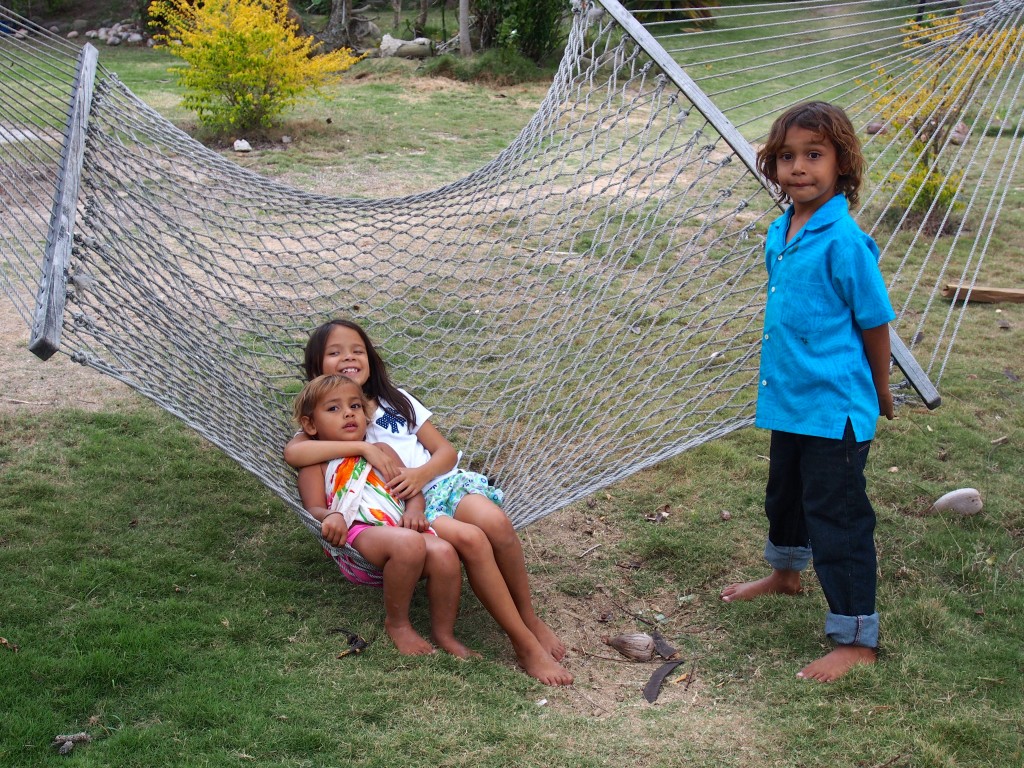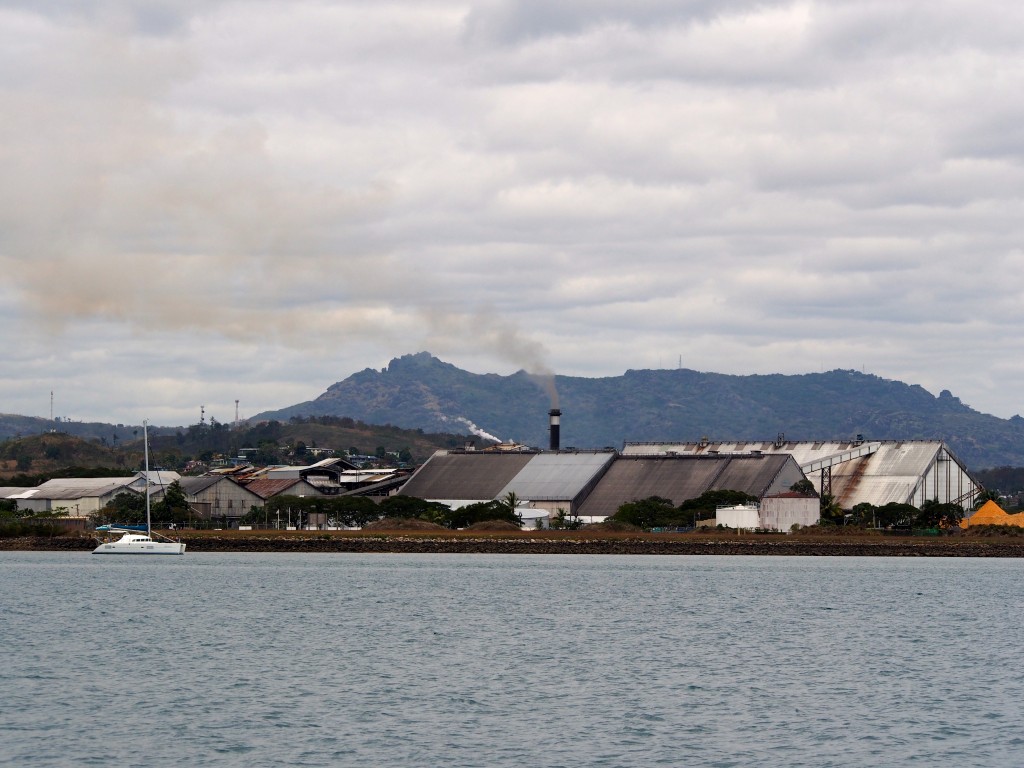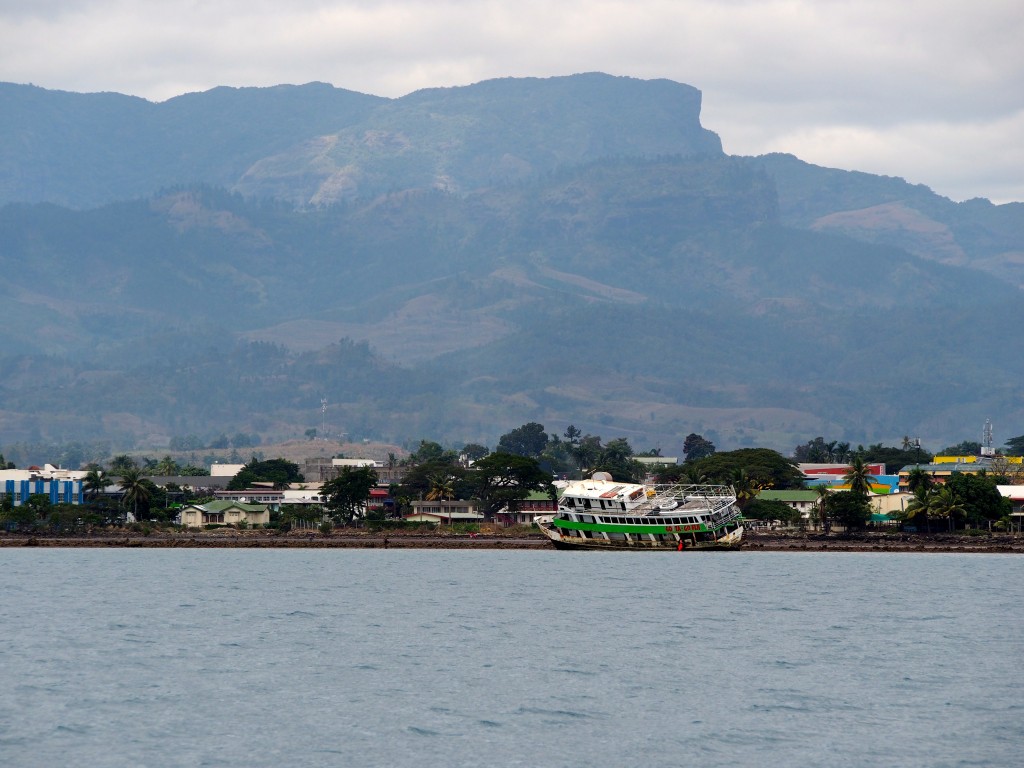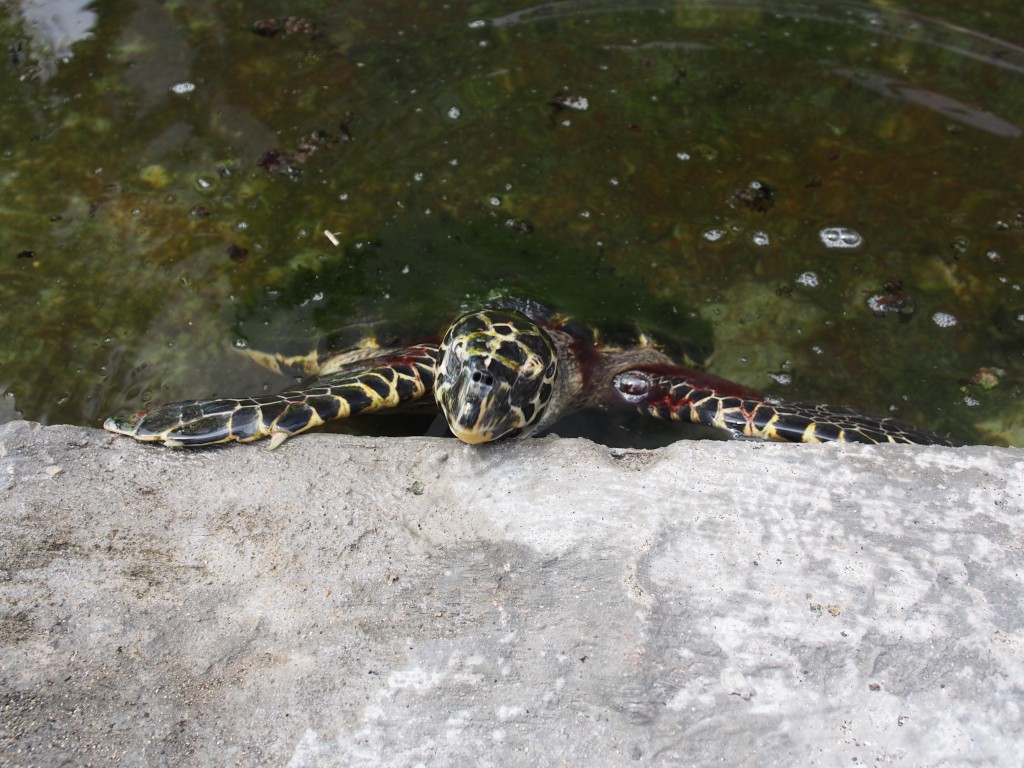Namea Island
A long 1-day sail took us to Namea Island, a small island with a surrounding barrier reef and a small resort. Namea is a protected marine reserve and is one of the top dive sites in Fiji. Only one other boat was anchored off the sheltered west coast of the island when we arrived. We dinghy’d to the wharf and climbed the steps leading to the resort. A fee is collected from all cruisers and goes to the village that owns the island as compensation for not fishing inside the barrier reef. The island is also a bird sanctuary with a huge population of red-footed boobies, who gracefully soared a few feet overhead our dinghy as we went ashore. There was only one couple staying at the resort that day, so they told us we could use the resort beach for a few hours. It was the ideal beach setting, what one dreams about when thinking about the South Pacific—soft-fine sand, warm-clear water, hammocks hung between palm trees, and not a sole in sight! We thoroughly enjoyed the time we spent there.
Namea Diving has a hut near the wharf, so we booked some dives for the following day. We joined the couple staying on the island who were honeymooning from the states for two reef dives. I went on the first one while Karen stayed with Jacintha on the boat, then we swapped for the second dive. Namea is well known for it’s soft coral and healthy reefs. They have over a dozen dive sites around the barrier reef. The first dive went to Manta Mount off the south end of the island. A Manta Ray cleaning station (where they go to get cleaned by reef fish) is located on the outside of the reef. It was a great dive even though we didn’t spot any Manta Rays. Went down to 80’ along the wall and saw spanish mackerel (Whaloo), white-tipped sharks, and lots of soft coral fans. The dive boat dropped me off at Apropos and picked up Karen for the second dive at Neptune Mount off the west side of the island. She also enjoyed the dive and saw lots of soft coral and reef fish.
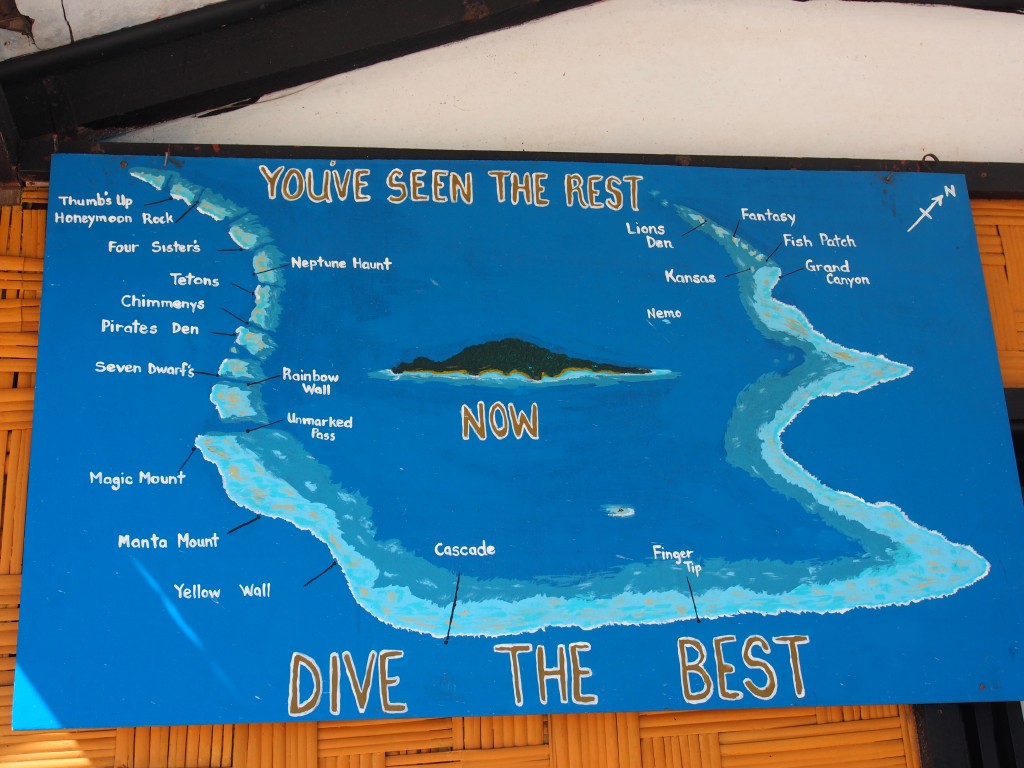
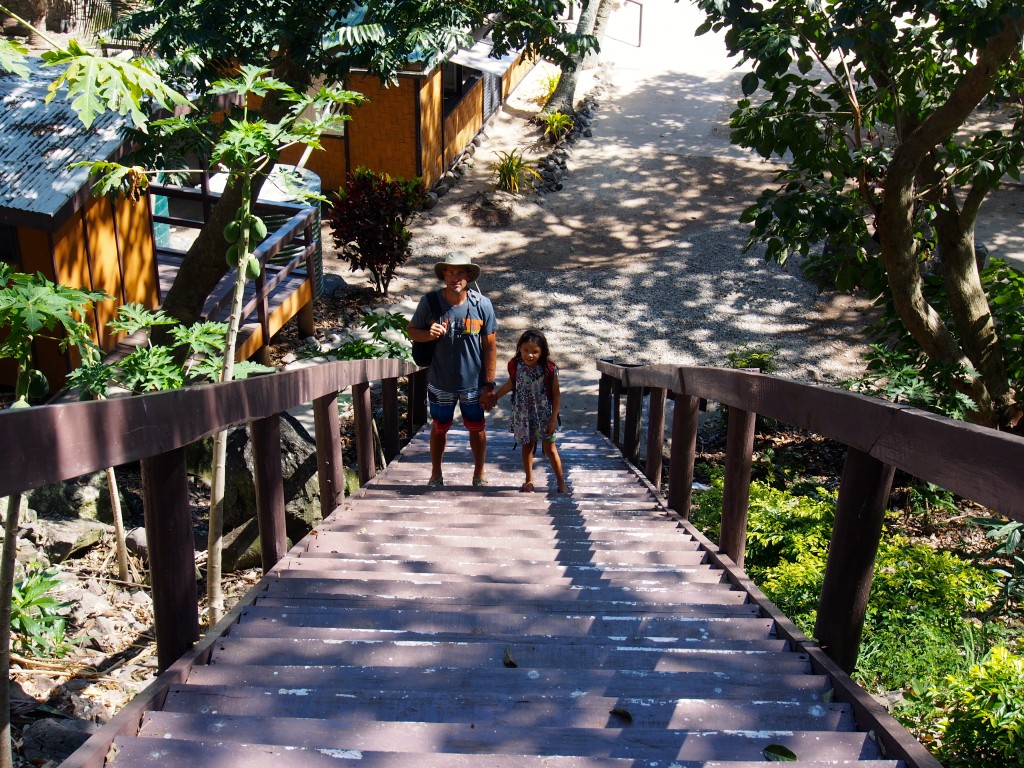
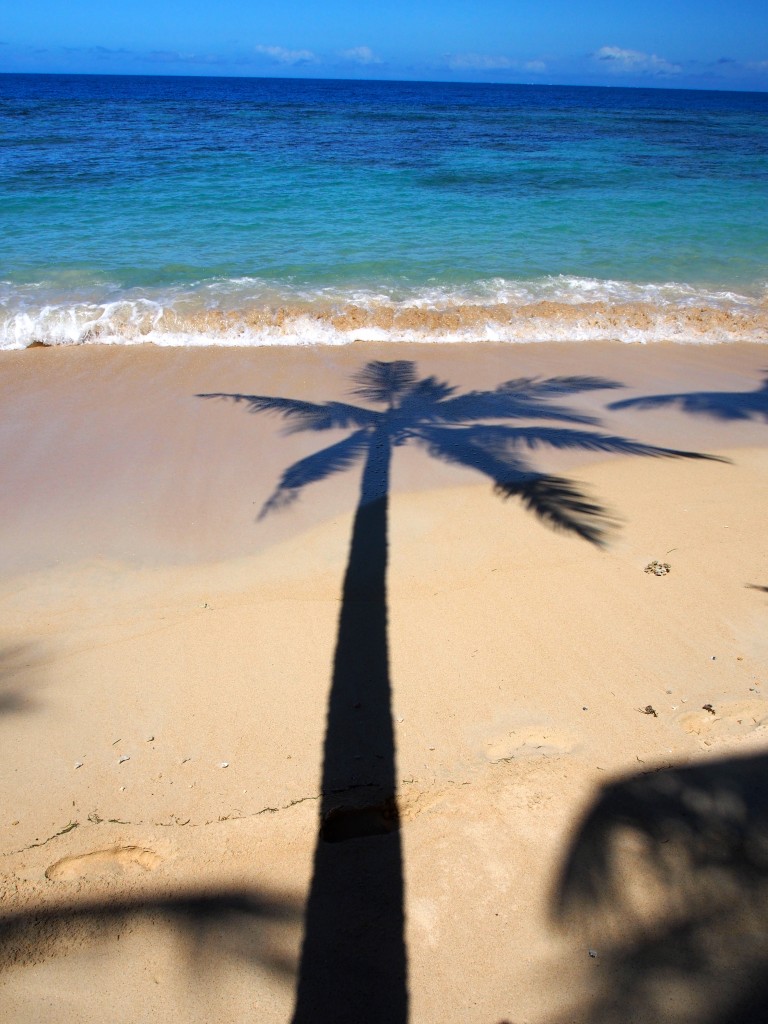
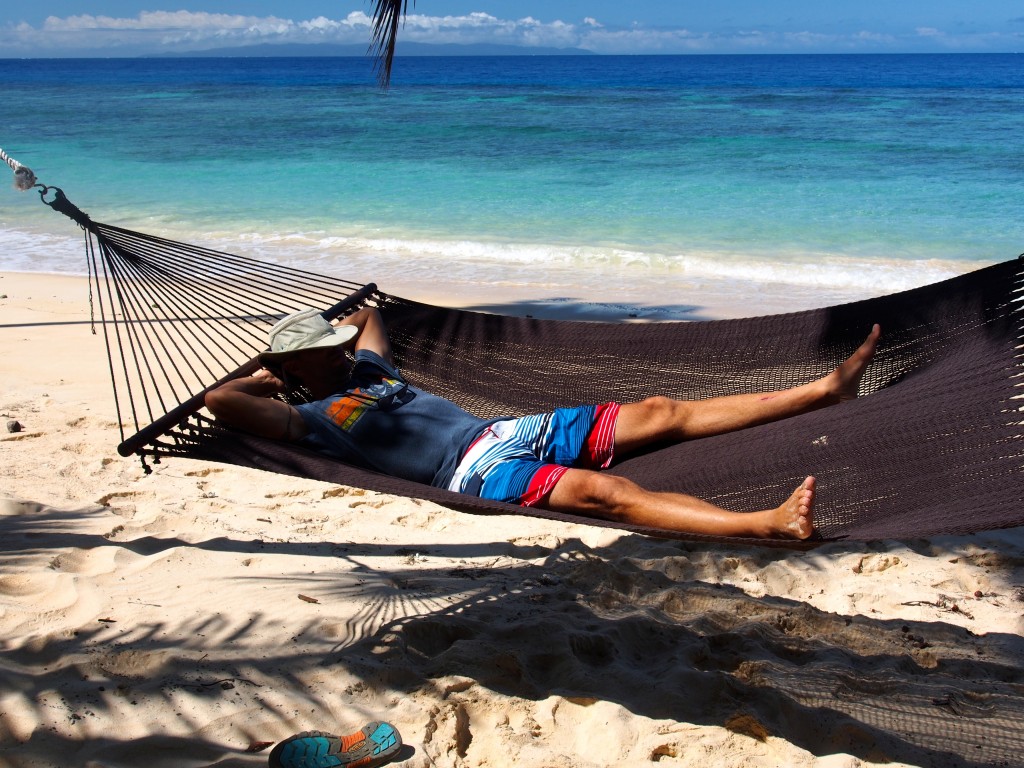
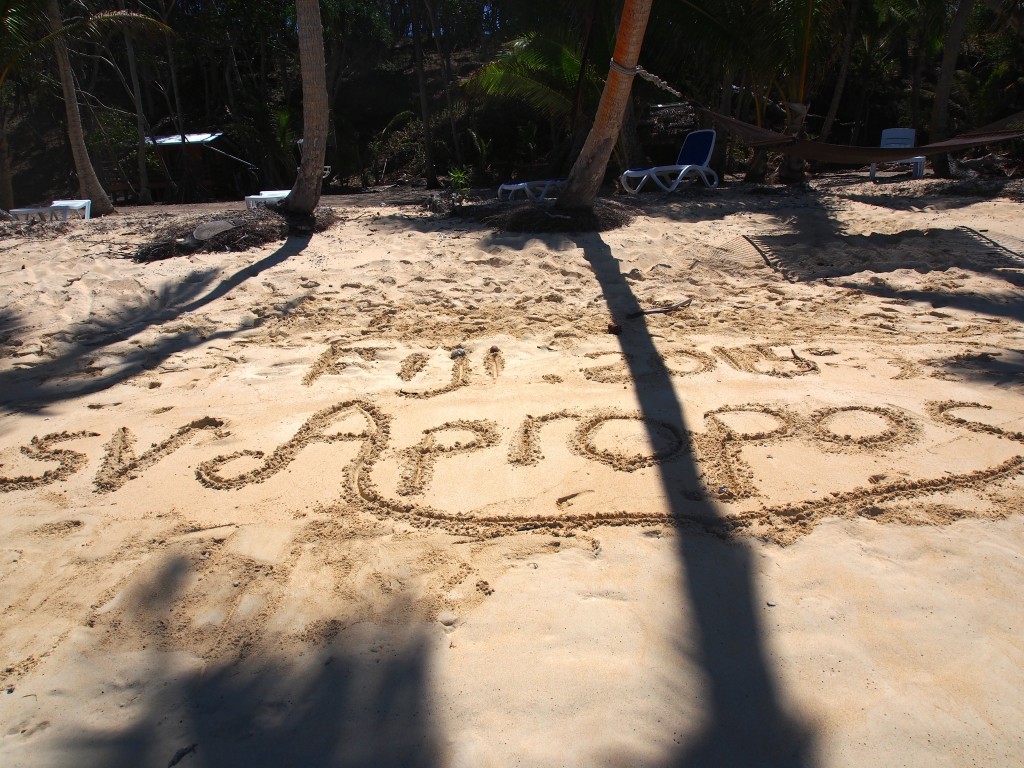
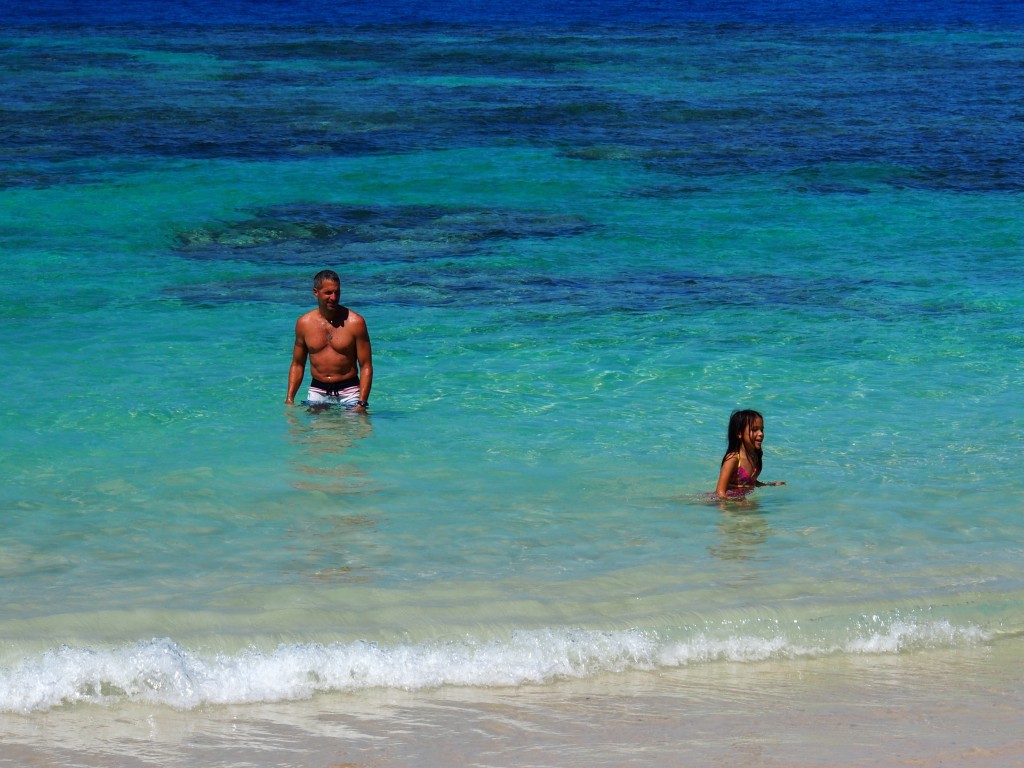
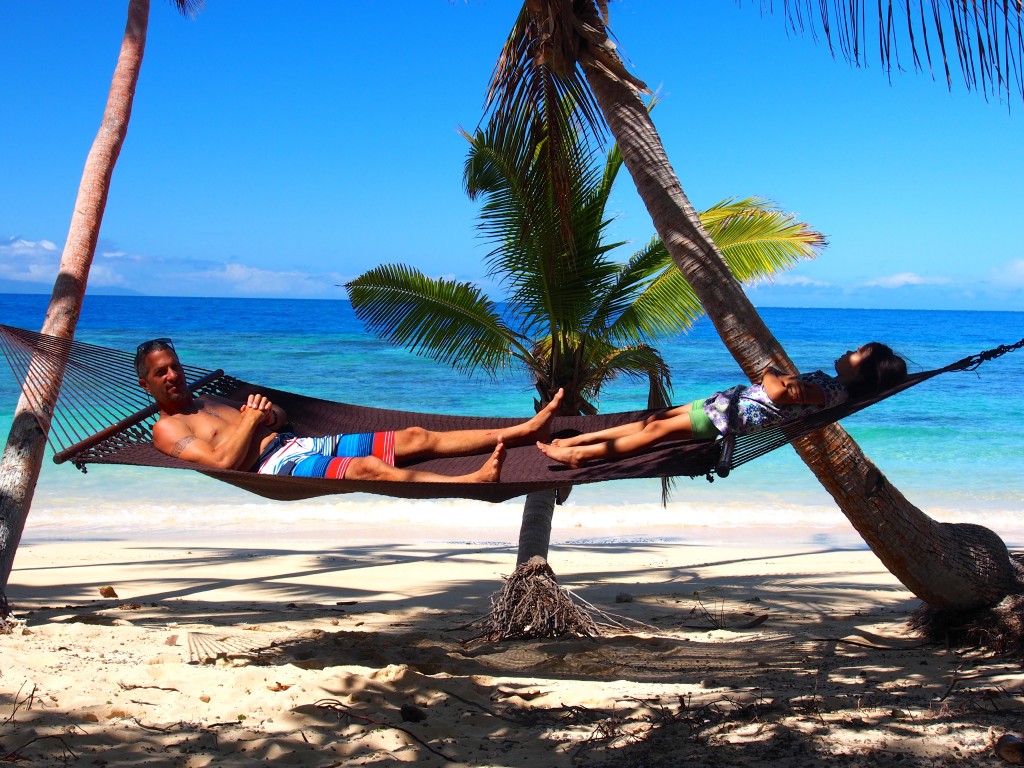
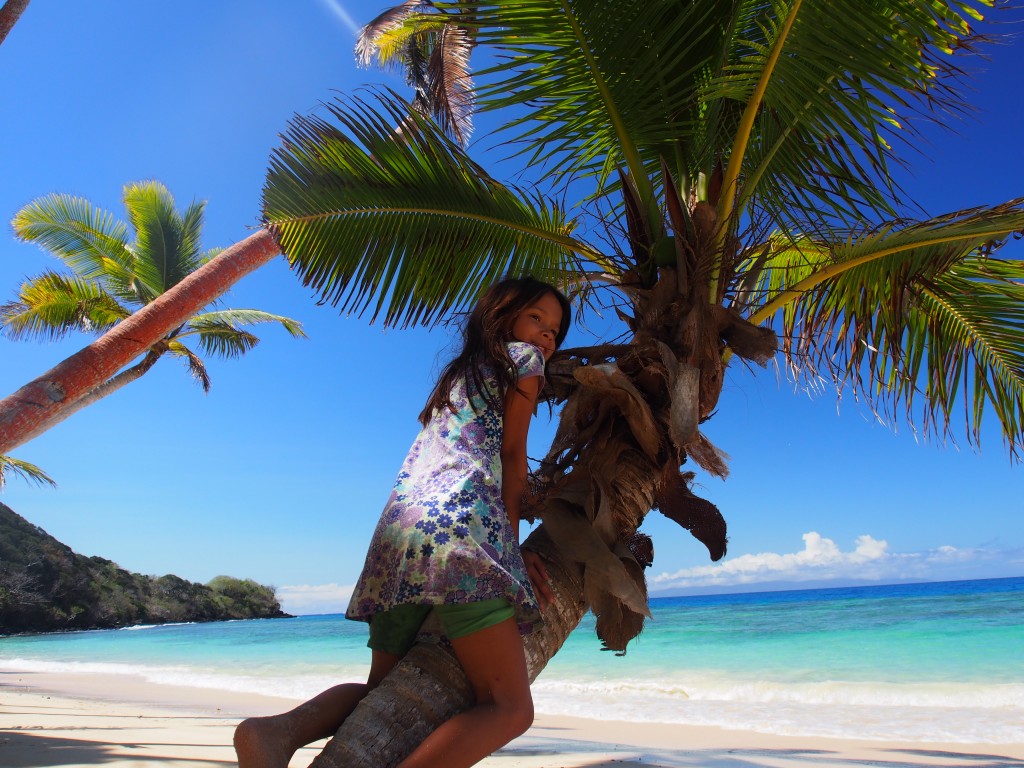
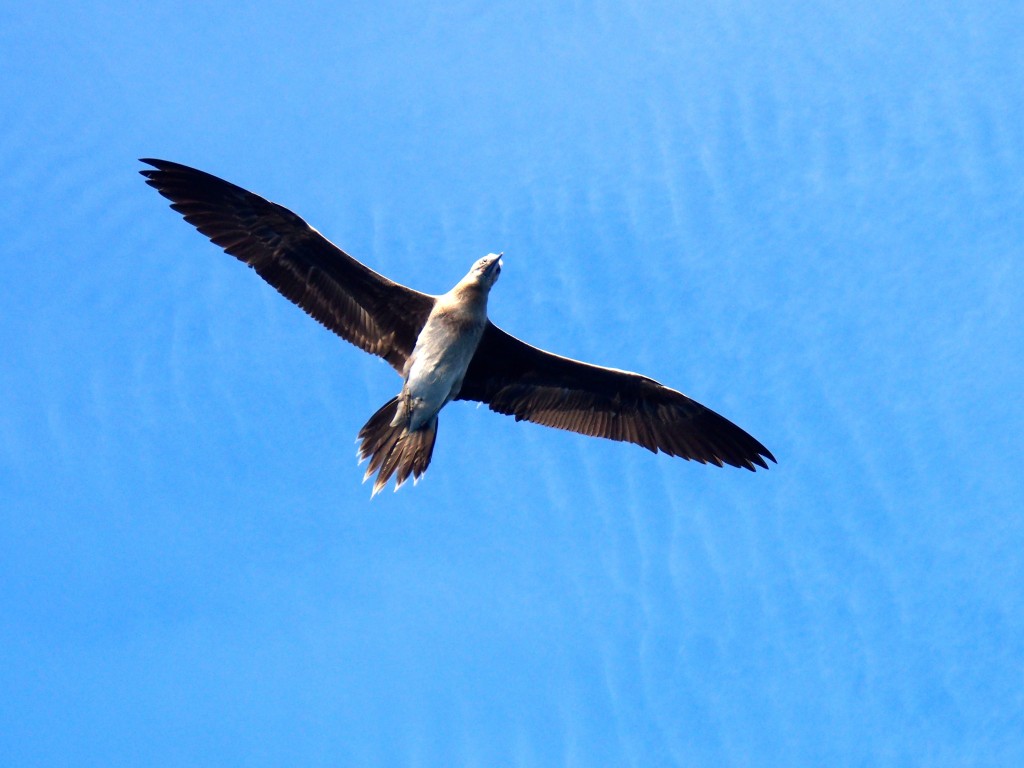
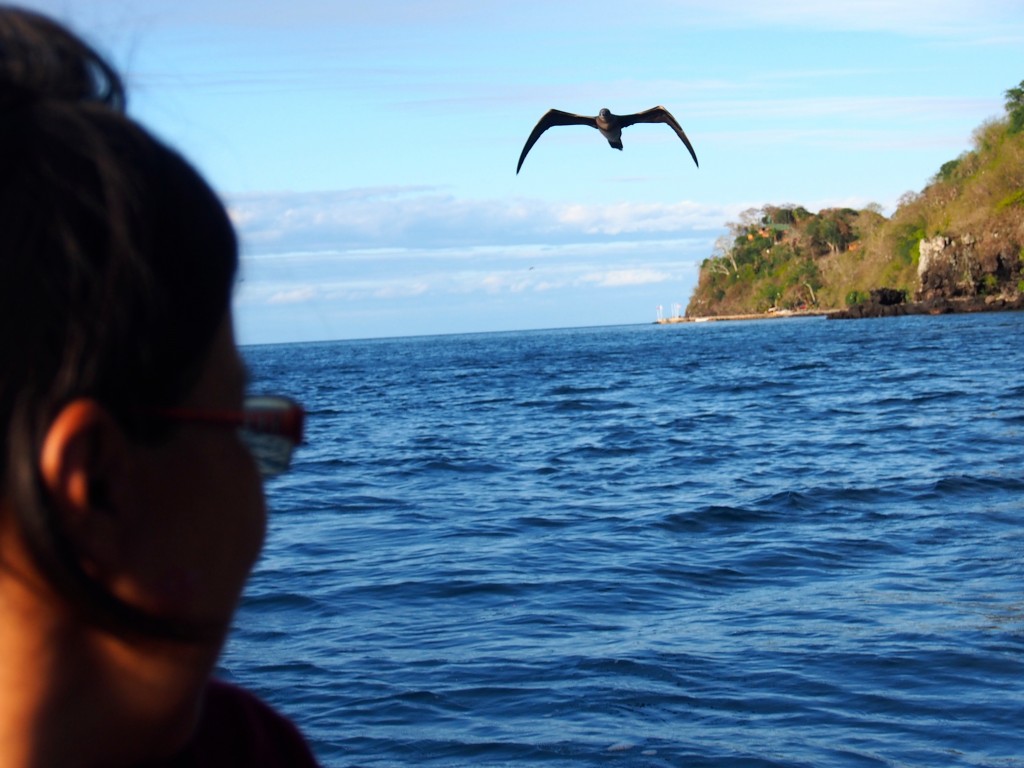
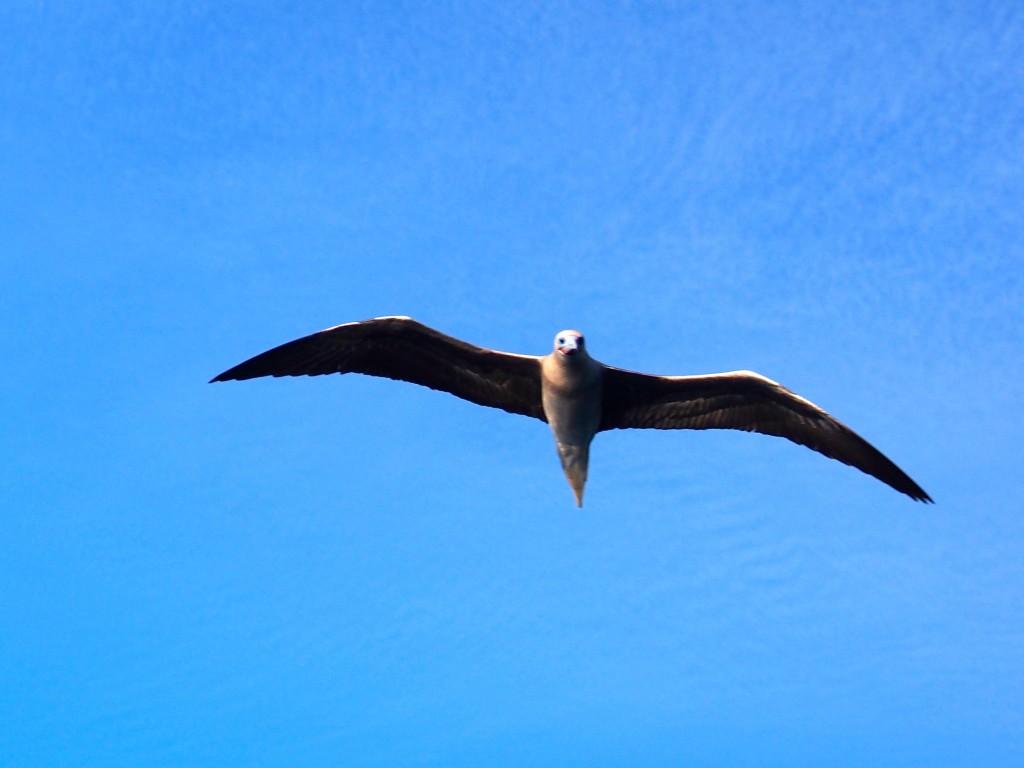
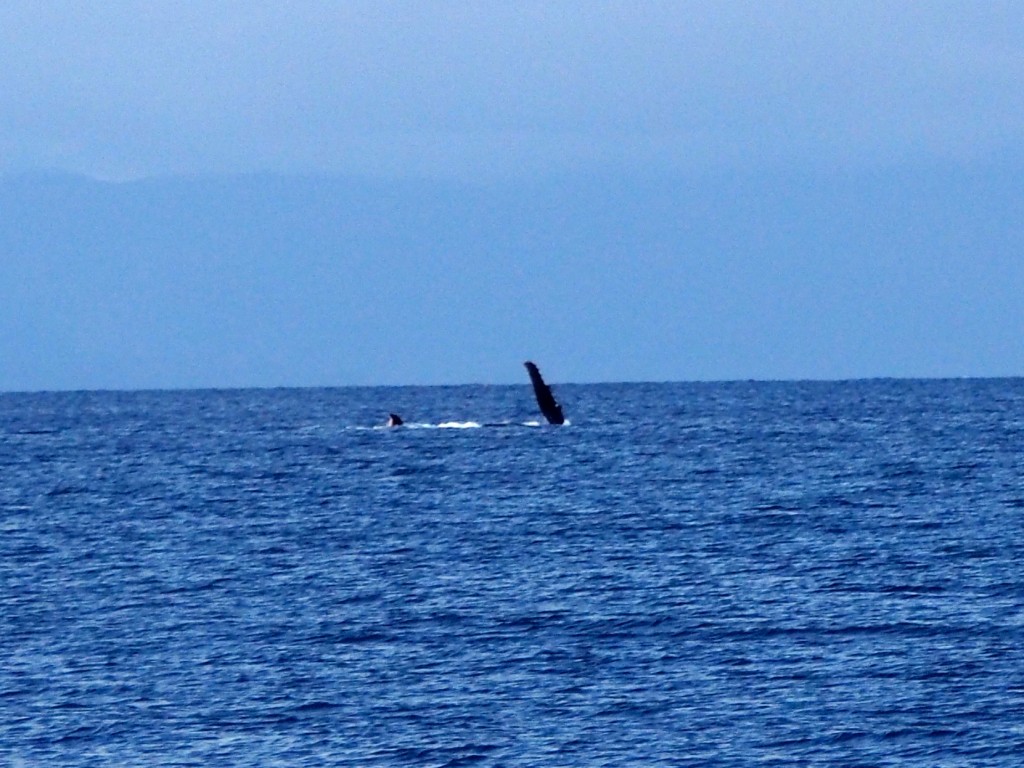
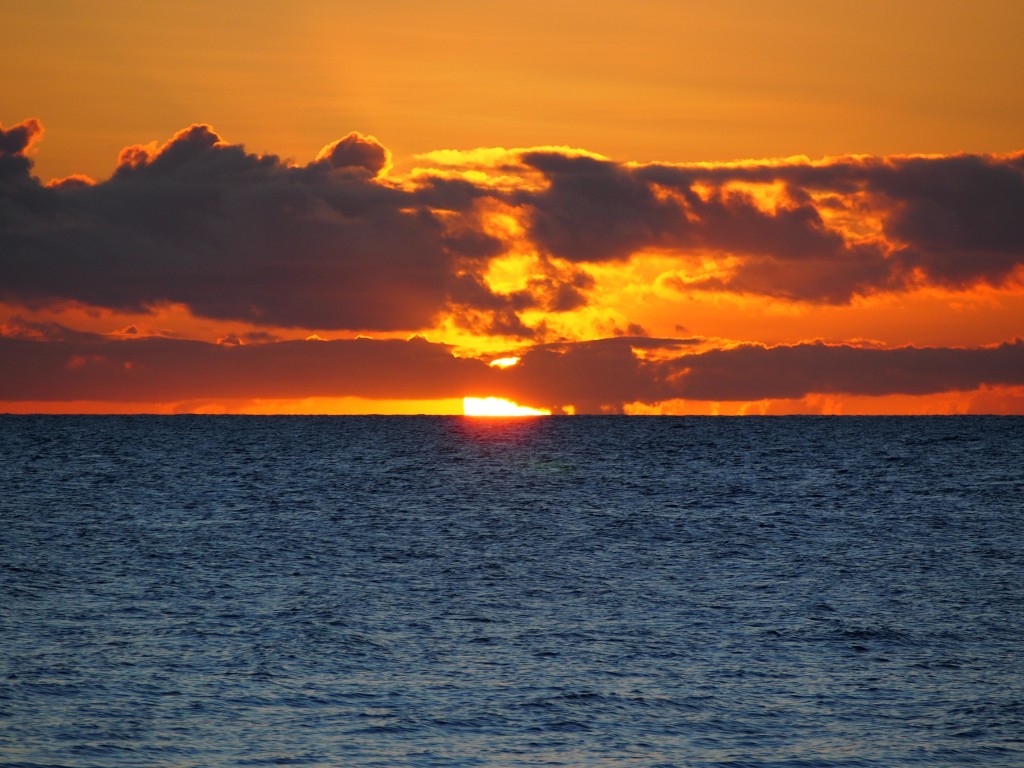
Makogai—A Former Leper Colony
The passage to Makogai Island was a 25 mile beat into 20 knot winds. We motor-sailed the entire way to keep a better heading and made it there in one tack. The bay is well protected from SE winds so the anchorage was nice and calm. In the morning, we did a quick sevusevu ceremony—the spokesman for the tribe accepted our waka, said a few words in Fijian, and it was over in less than 5 minutes. This is a more typical sevusevu in villages where lots of yachts visit.
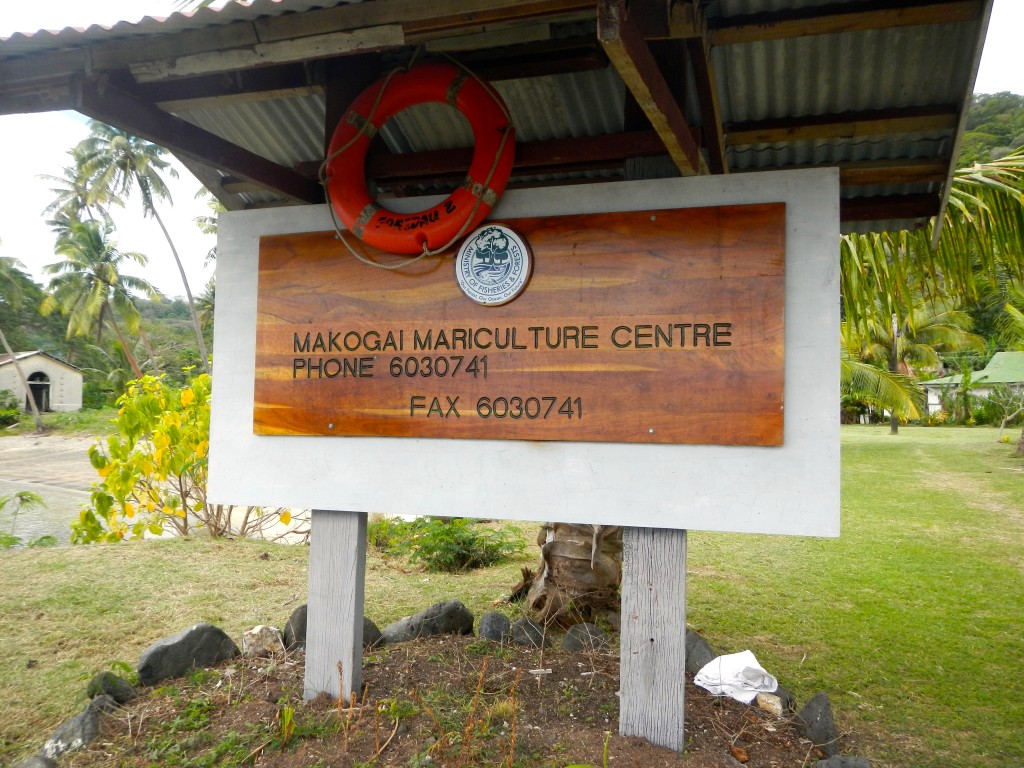
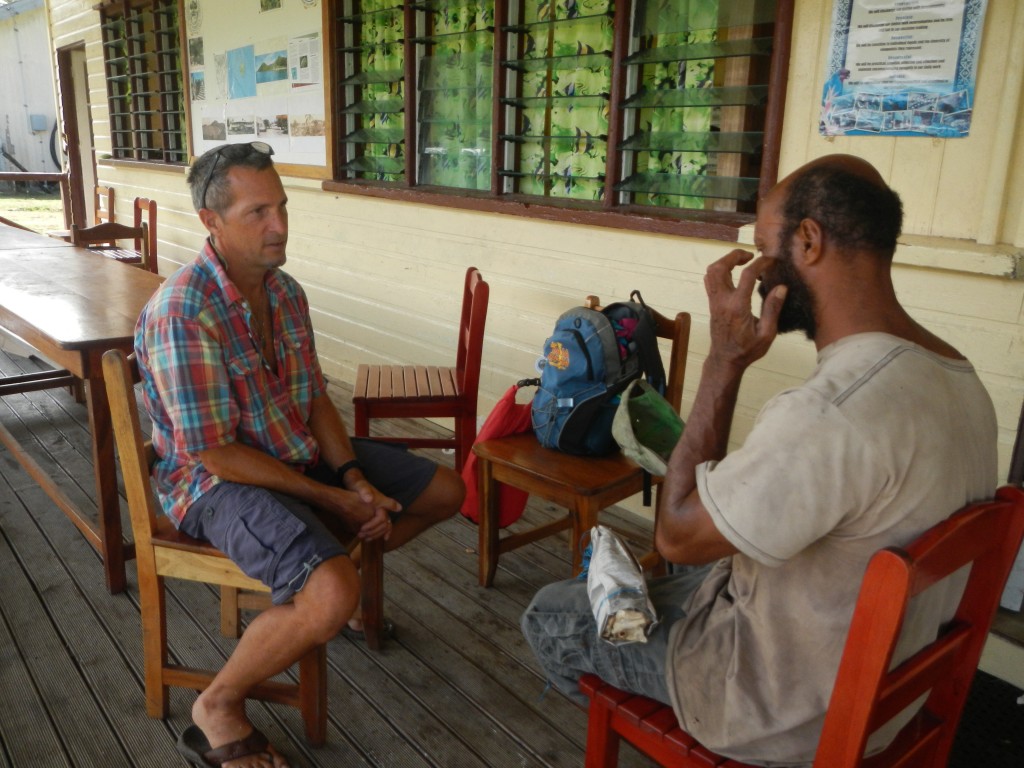
The sevusevu offering granted us access to the island, which has a very unique history—Makogai is a former leper colony. Lepers throughout the South Pacific were brought here for treatment and to get away from the social stigma they faced at home. A young, educated Indian marine scientist who does research on giant clams gave us a tour of the former colony. The island was divided into wards to segregate people of different nationalities. If you were not too sick, you would live in one of these wards. Otherwise, you were admitted to one of several hospitals for treatment. We saw the remains of an outdoor movie theater, a hospital, a surgery building (where they performed amputations), a jail, and a large cemetery of mostly unmarked graves. Leprocy is a bacteria-infected disease that causes skin lesions and nerve damage. The nerve damage blocked pain so injuries were often not treated and got infected, which would result in amputations. In the 1950’s when leprosy cures were finding their way to Makogai, the survival rate improved. Eventually the lepers were moved to a bigger hospital in Suva on the main island of Fiji, and the colony was disbanded in the 1970’s. There are still a few survivors from the Makogai leper colony who return to visit this small island.
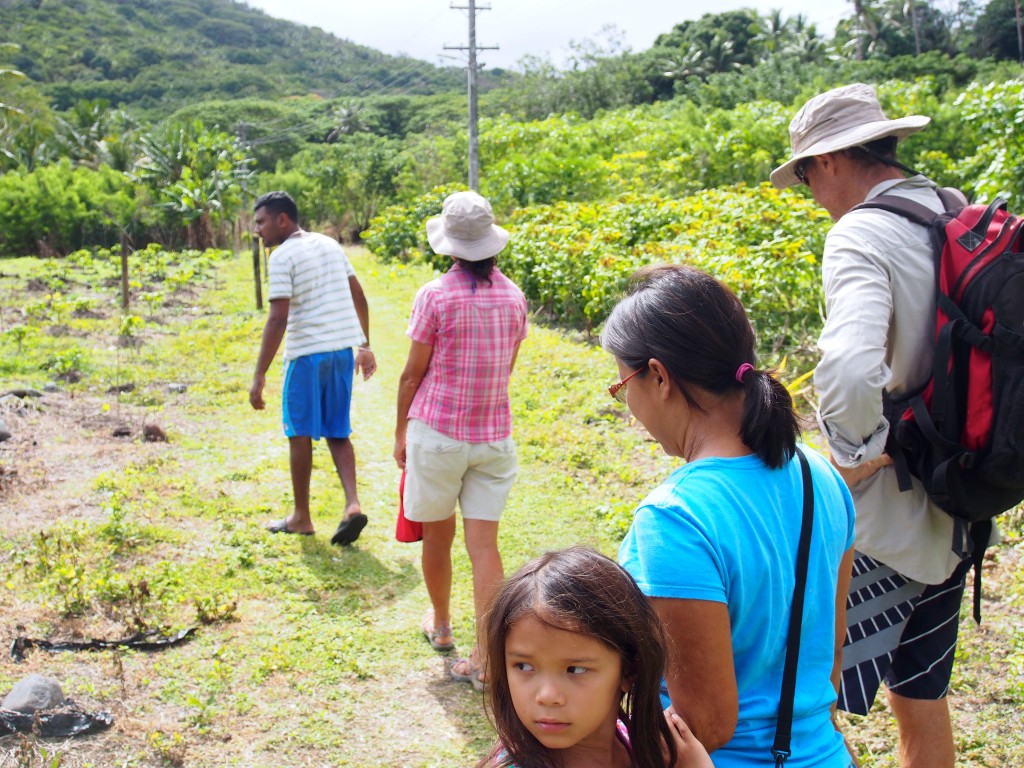
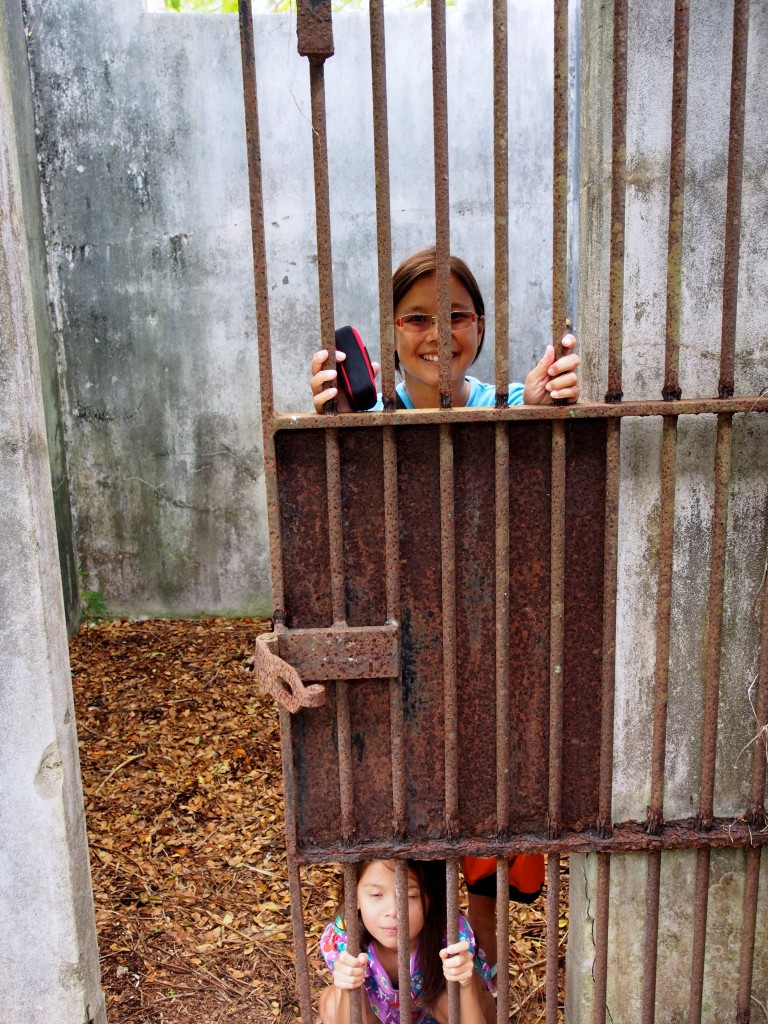
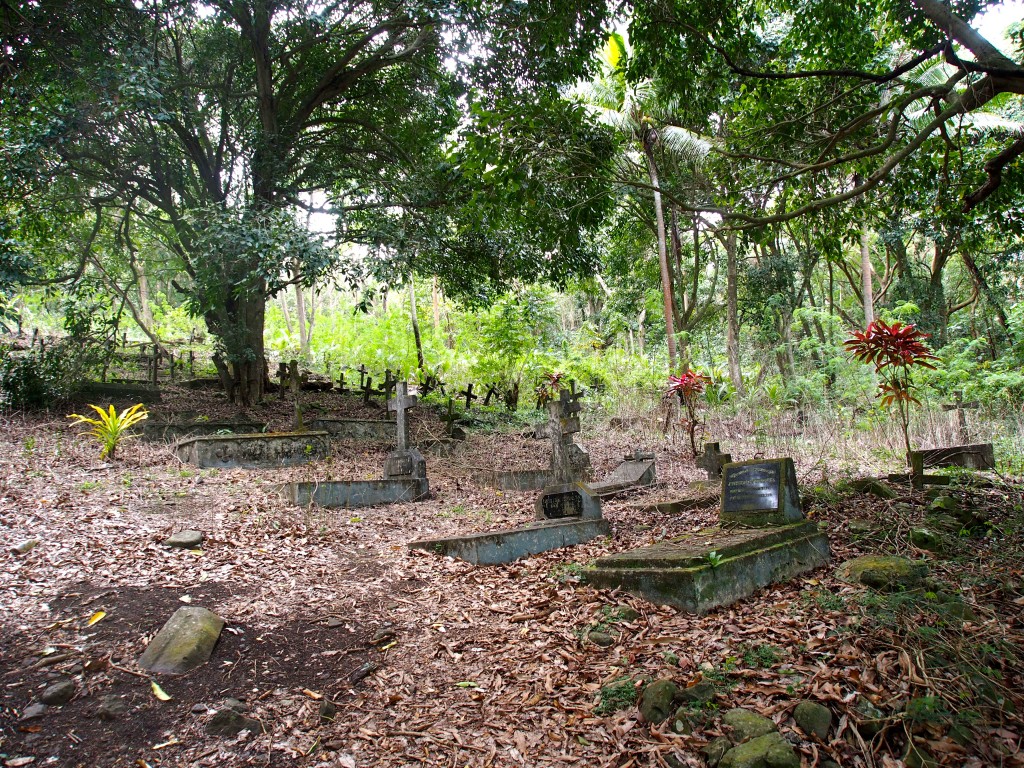
The other thing Makogai Island is known for is the research on giant clams. They have concrete tanks where the small clams grow for a few years before they can be transplanted elsewhere. We snorkeled around some mature giant clams next to the wharf in 10 feet of water. The color of the lips are from different types of algae. They also have a turtle rescue program for injured sea turtles. One of the large ones being treated was shot through the head with a spear gun, and lists to one side as he swims around the concrete tank.
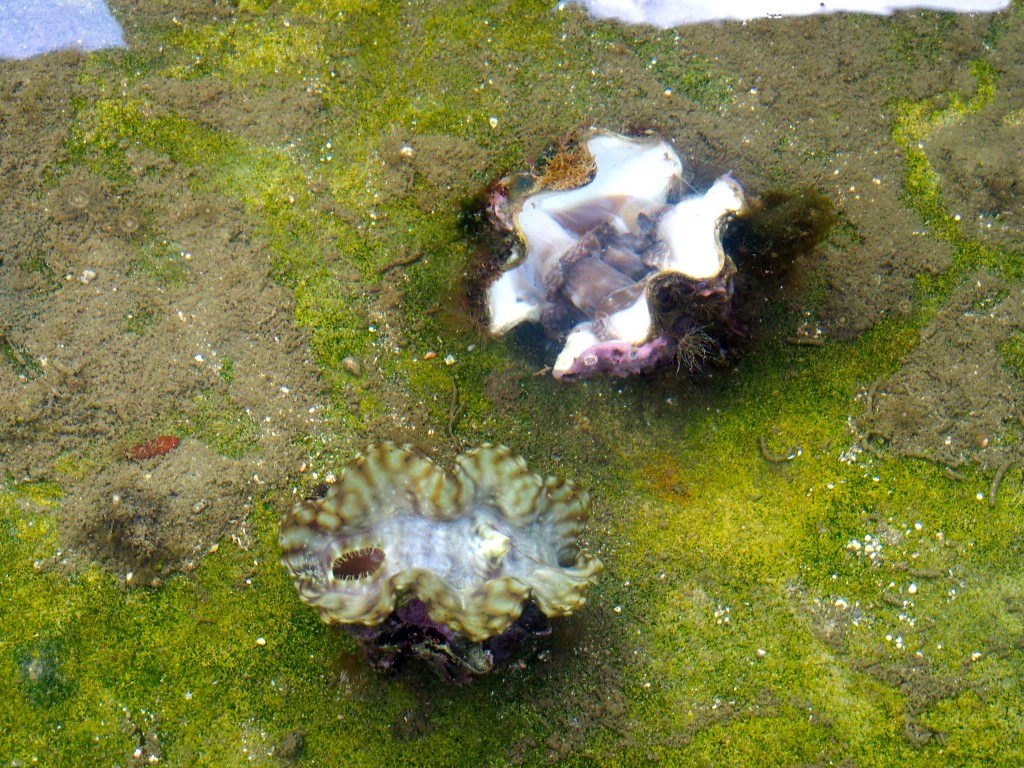
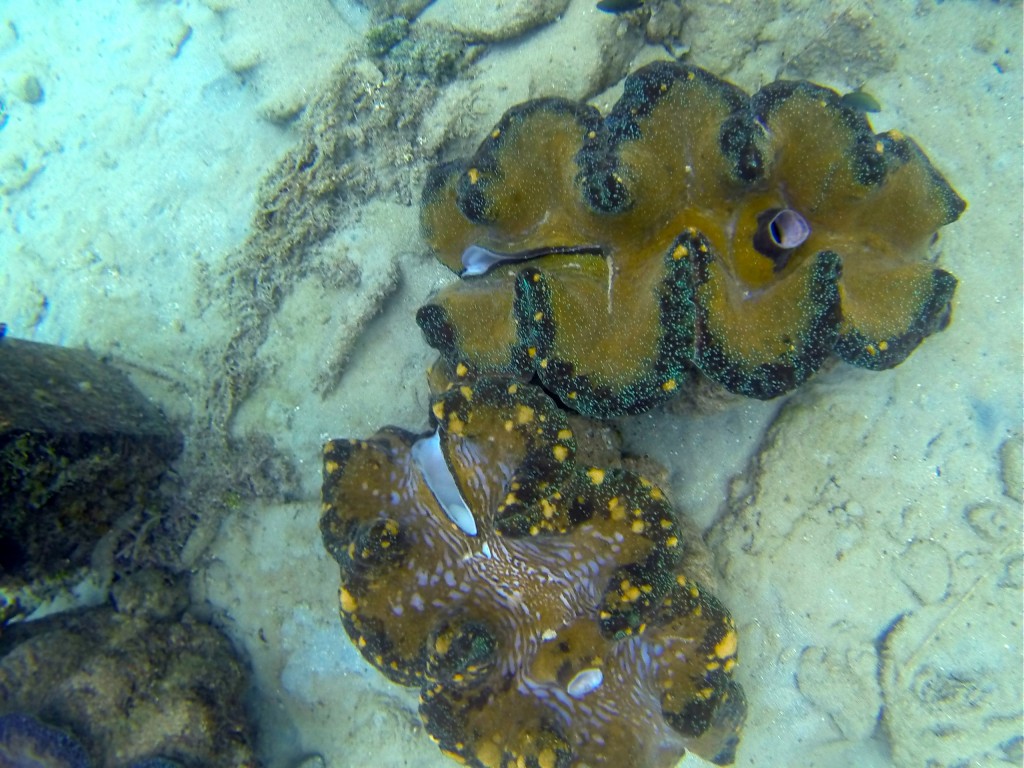
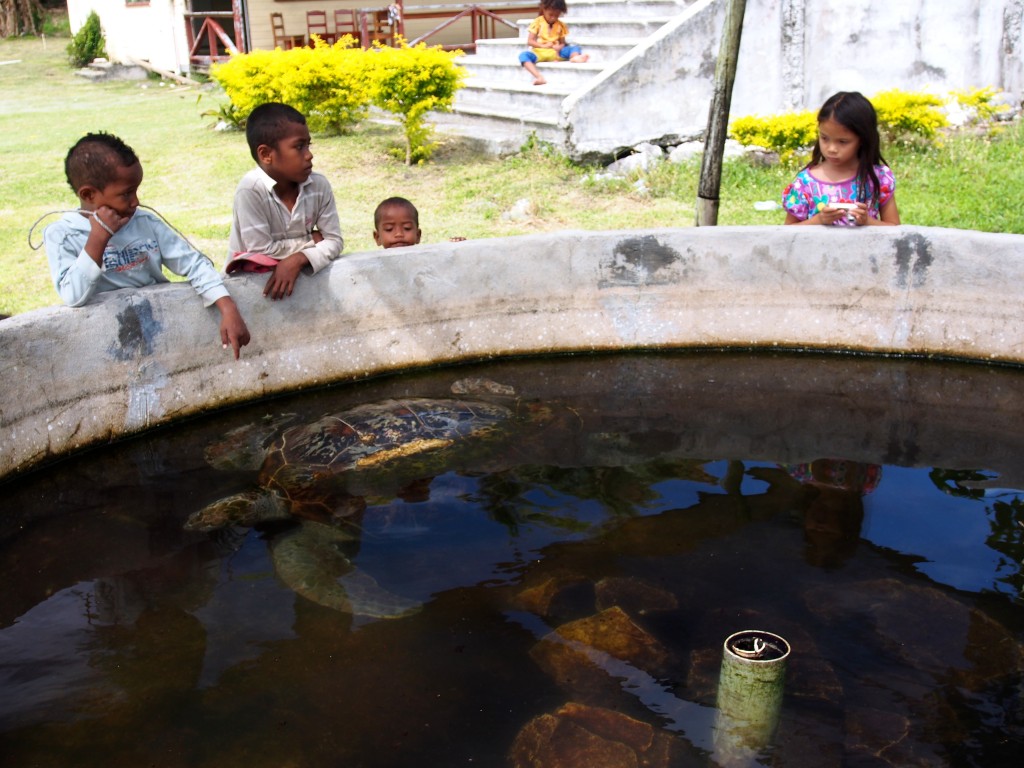
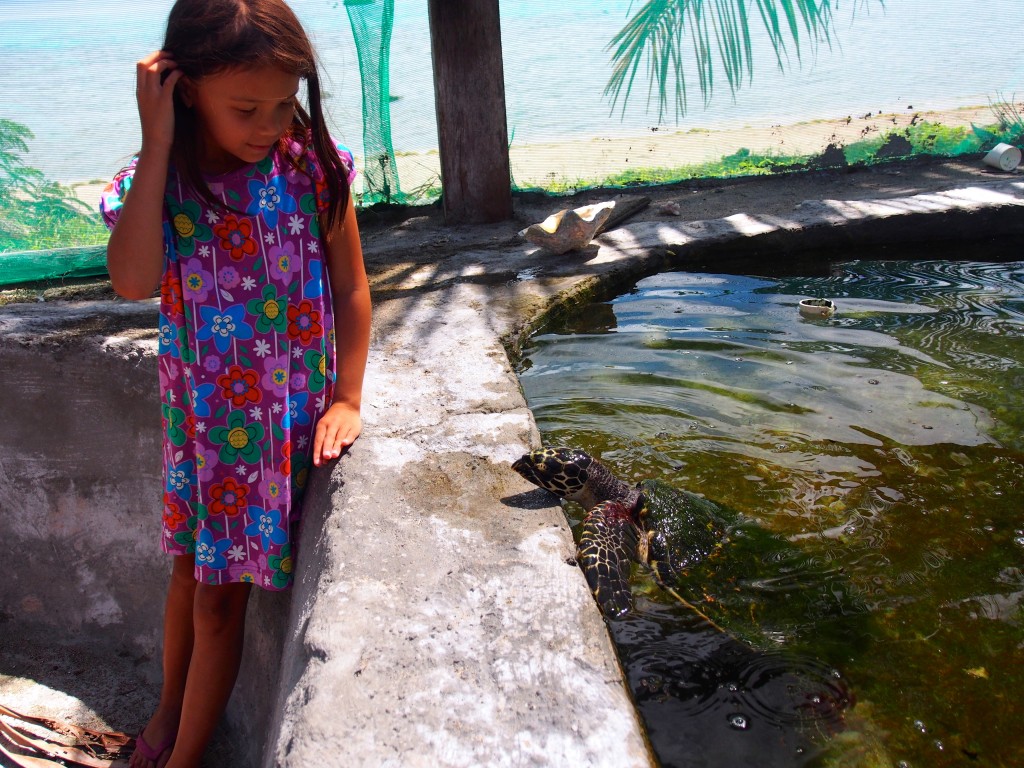
During our stay on Makogai, we also had a great time with the children. They were shy at first but it didn’t take long before we were having fun on their rope swing, throwing frisbee, playing touch-rugby, and volleyball. Jacintha handed out a large bag of colored pencils and when she finished, they traded among each other for their favorite colors. We also left them with a nerf football and a frisbee. We traded some cans of meat, toothpaste, and toothbrushes for coconuts and bananas.
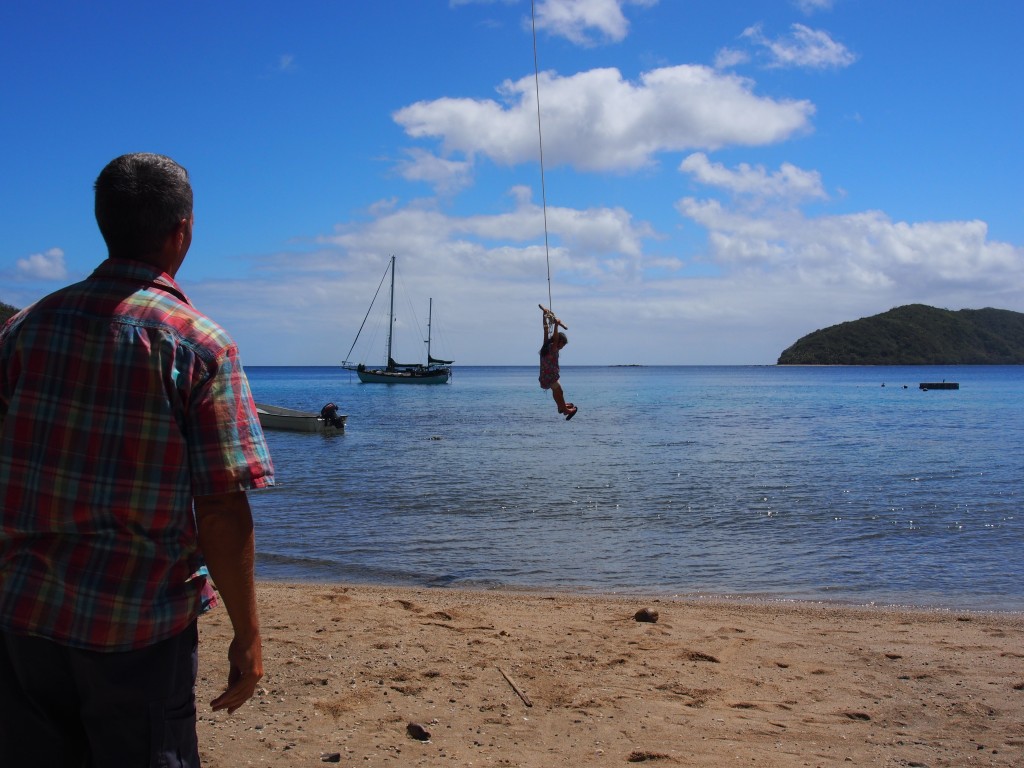
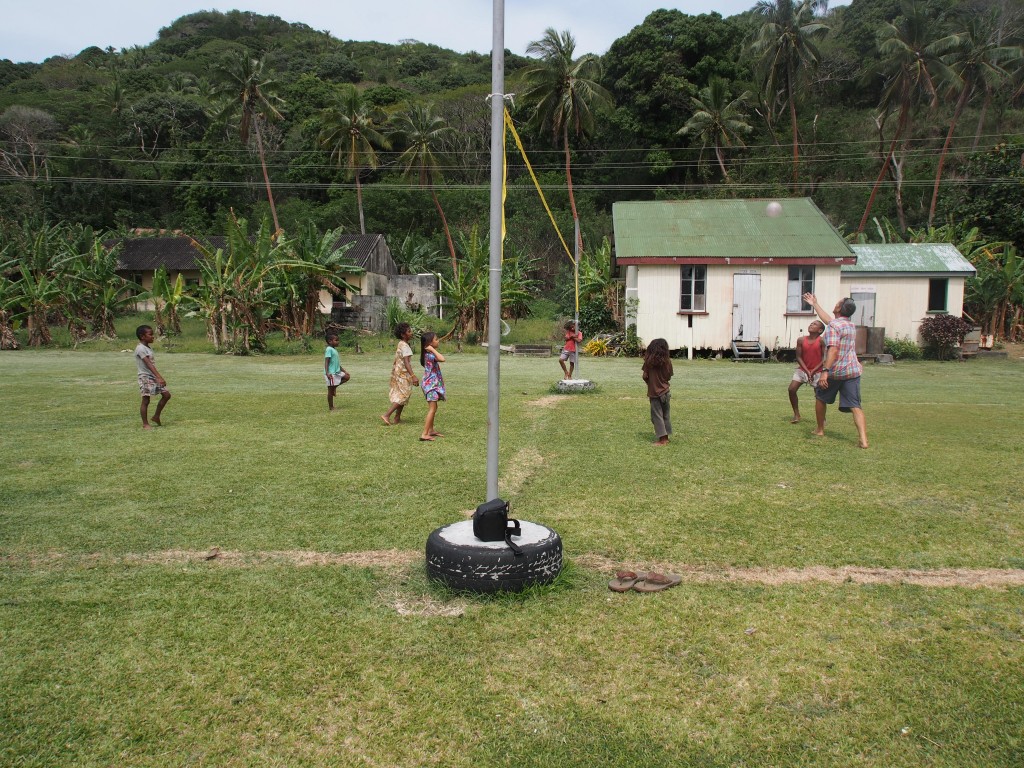
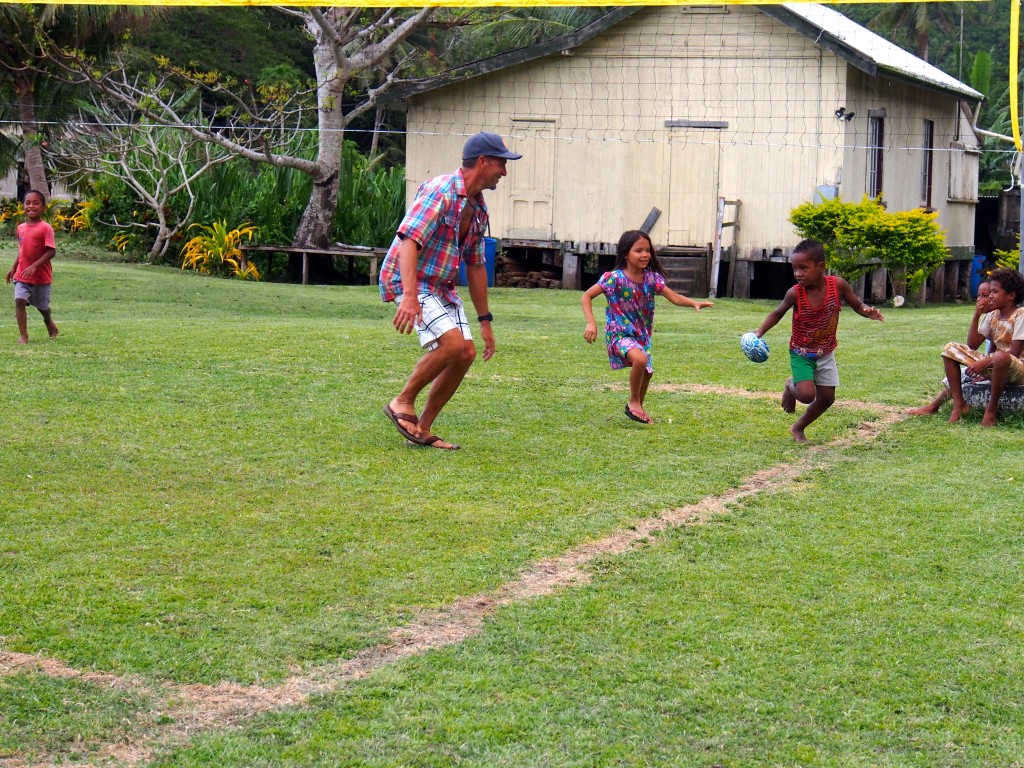
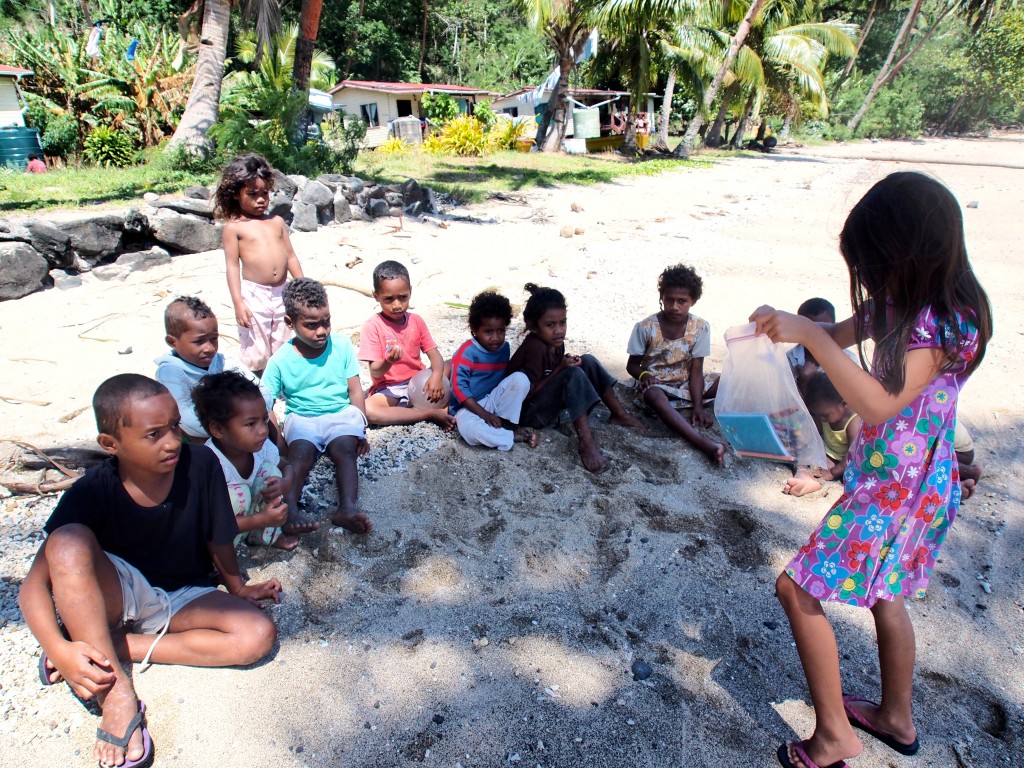
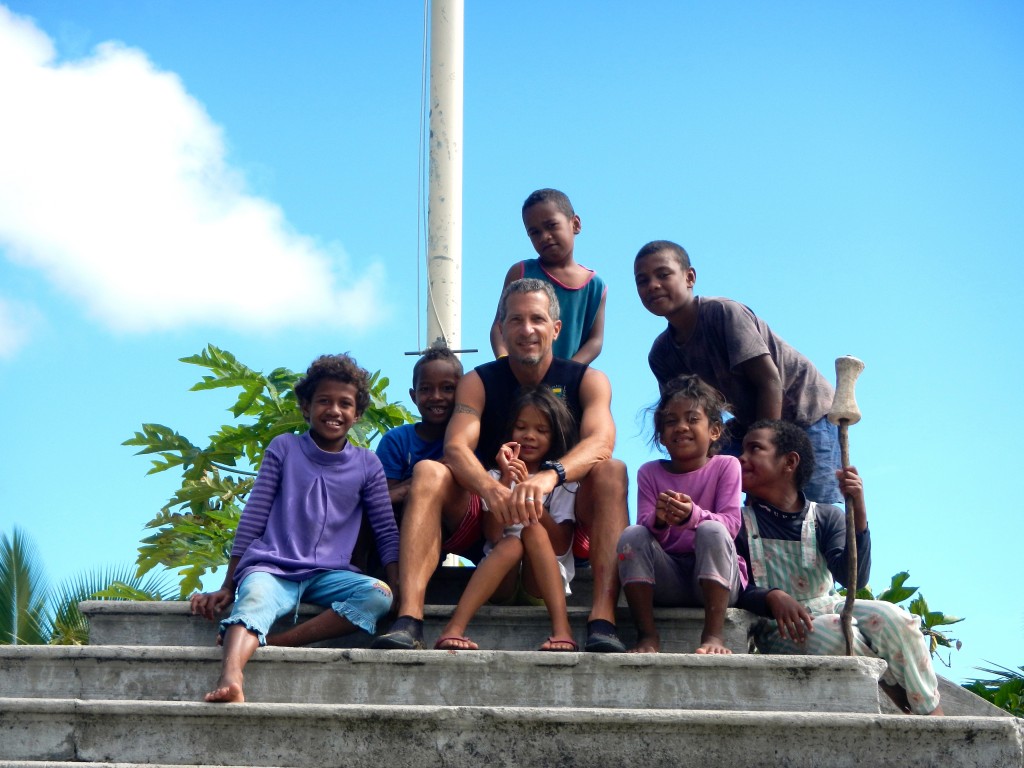
Transiting the Reef
The north coast of Viti Levu is full of dangerous reefs and narrow passes. We covered 90 miles over 2 days to go from Naingani Island to Nananu-I-Ra to Lautoka, the majority of it under sail. This type of sailing is quite opposite from blue-water passages, where you go hours or days without changing course. We used multiple electronic charts (Garmin, OpenCPN, and Navionics), known waypoints, and a good bow watch to get through safely. Having the sun behind you makes it much easier to see the color changes for spotting reefs. Each day we planned to leave a few hours after sunrise and arrive at our destination by 4pm. We also had a backup destination we could anchor at in case we couldn’t make it to our planned stop. Most of the maneuvering around the reefs was uneventful, but a few places provided more excitement than wanted! Along the way we caught 2 small fish, keeping one for dinner and throwing the other back in. As we moved around the top of Viti Levu, a change in climate and landscape was noticeable. Lautoka, on the west coast of Viti Levu, is warmer, dryer, and sunnier that the windward east side.
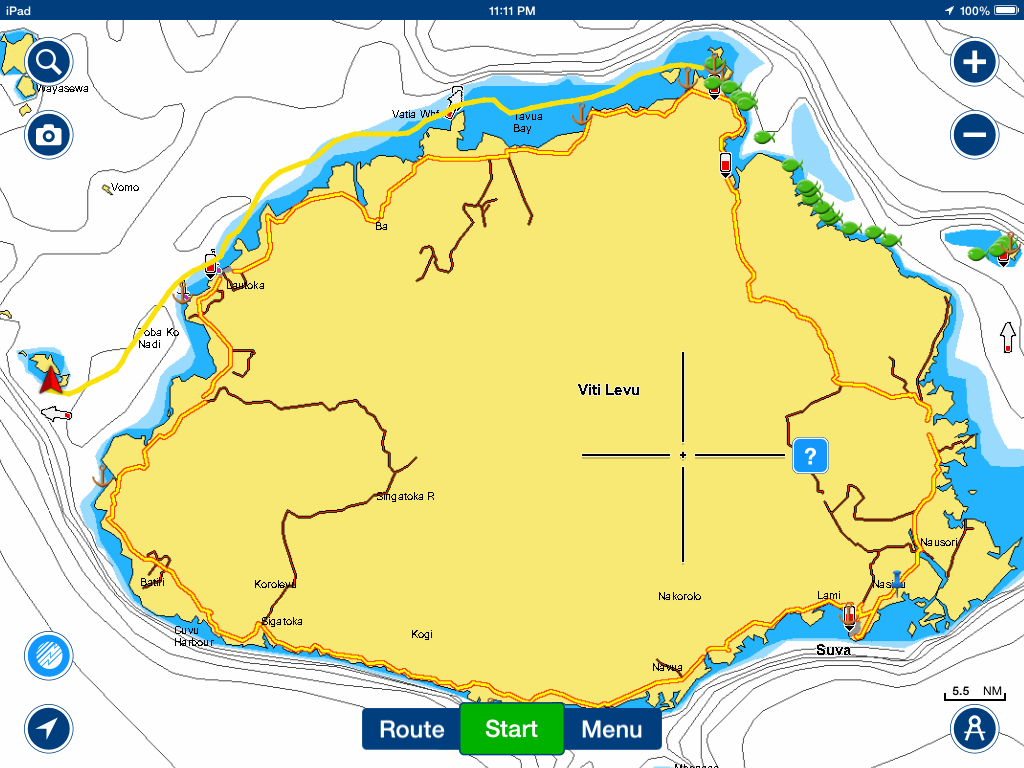
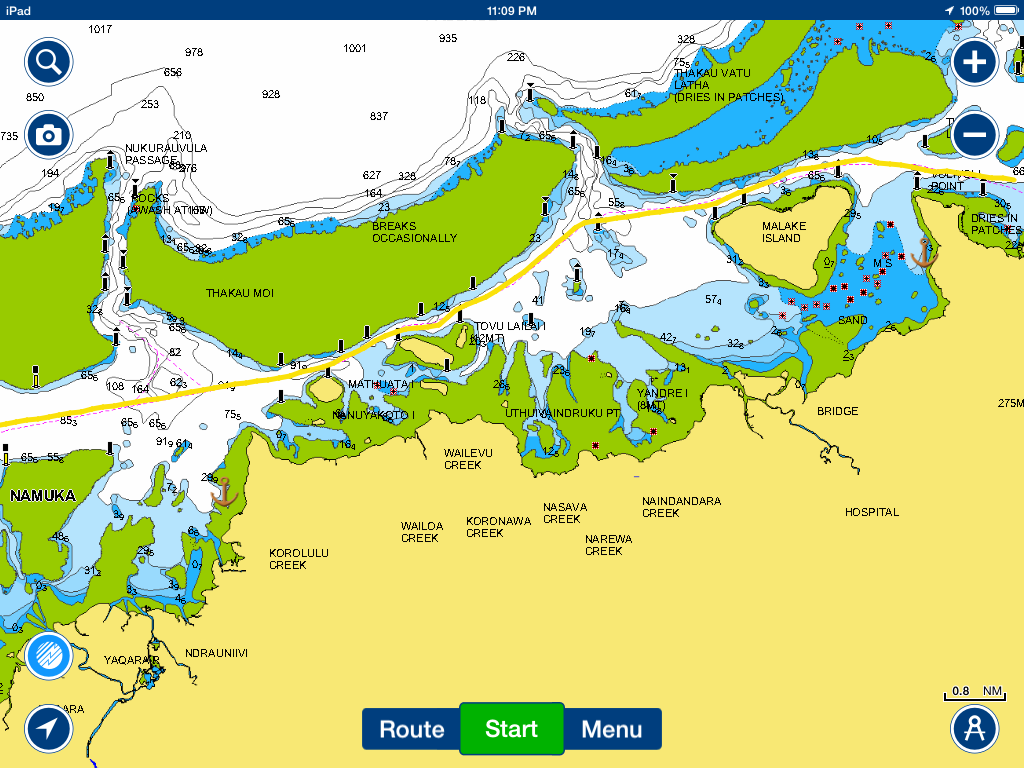
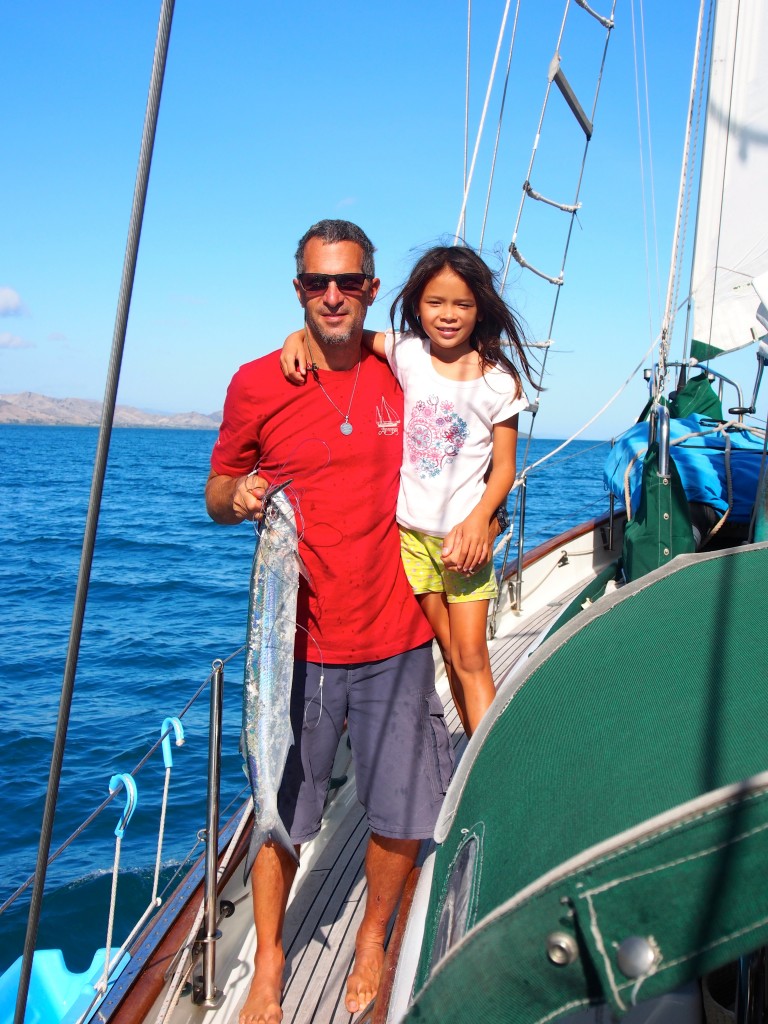
Lautoka and Bekana Island
After a long day of motor-sailing through the remaining reefs along the north-west end of Viti Levu, we anchored off Bekana Island near Lautoka. An outdated cruising report said the resort there was friendly to cruisers, so after taking the dinghy into Lautoka for lunch, we pulled up to the resort, only to find it closed. The new owners, Chris and Ashwin, took over the dilapidated resort 6 months ago and are doing a wonderful job restoring it. They invited us in for tea and to share their vision of what they plan to do with this resort and possibly others throughout Fiji. Instead of 5-star resorts that cater to the rich and famous, they want to build comfortable, green resorts that involve the communities they are near. This one, called Haven at Bekana, will be opening in a few months. I look forward to checking it out when I return for Apropos next year. Two of their children (Dave and Sarah) entertained us with singing and the guitar while Jacintha played with their grandchildren outside.
